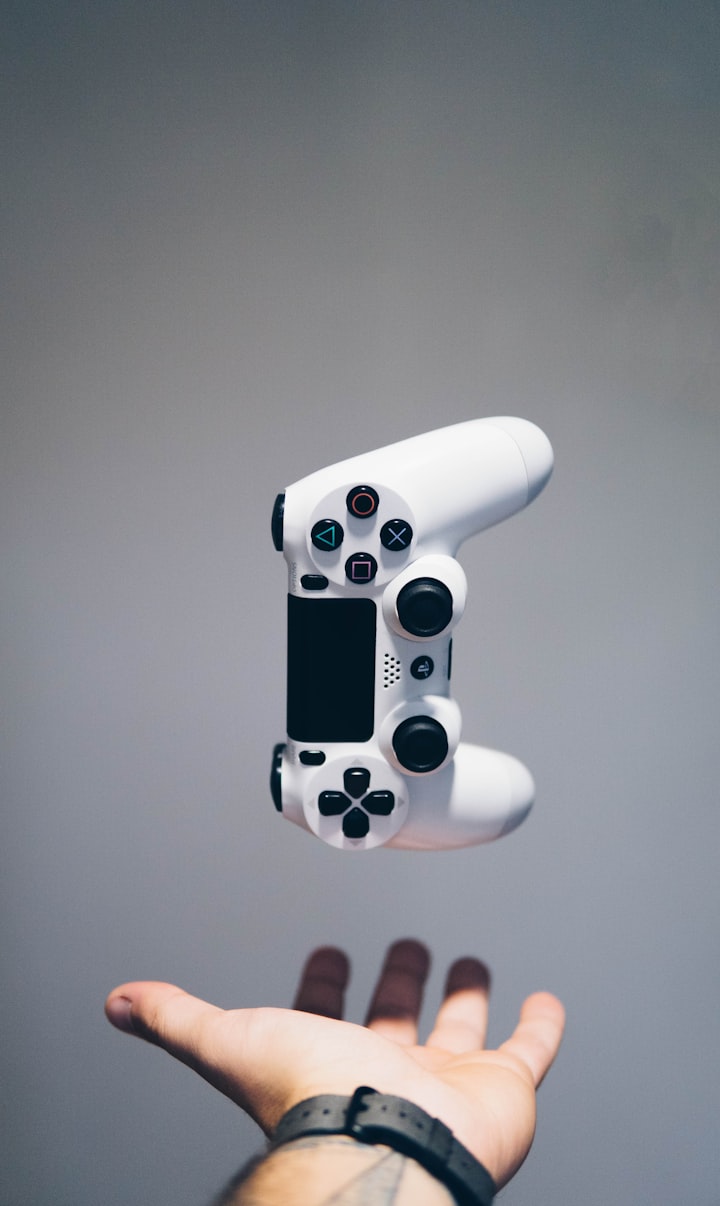
Every human, animal, insect, or any creature is afraid of something. Fear of something is natural and a vast category. Fear of bugs, large animals, loss, death, rejection, heights, storms, holes, and more. I do not think hominins had many phobias like we do today. They were more afraid of creatures and natural disasters. In the game Ancestors, the enemies are accurate to what early hominins were afraid of.
Along with the fear of the living creatures, I'm also afraid of the non-living. Not in the sense of a fire or storm. At times, late at night, I am not afraid of the dark or what's in it. I am more afraid of the enemies I would run into while playing Ancestors. Did I save recently? Do I have enough stuff? Is my health bar full? I believe that having instincts similar to my early hominin ancestors, I am rightfully afraid of giant eagles, snakes, and crocodiles. There are more enemies in the game, but these three are the ones I am least afraid of in reality and more afraid of in the game.
This game dives deep into our origins and how humans became humans. You play as a primate throughout the game, walking on all fours. As you progress, you can have the primate perform different tasks to help evolve. For example, I stood up to use my sense of smell. I moved a few points to bipedalism but could not walk upright, yet I would evolve into it. After playing the game for a while, I wondered if this game could be used in a way to teach anthropology. I intentionally sought out several enemies in the game to compare the combat and reactions to scientific articles about similar topics.
First, we look at baboons. "Baboon–hominin comparisons are most often directed toward hominin taxa that occupy an intermediate position in the evolution of possible human ancestors (from about 5 to 2 ma), mainly the general Ardipithecus and Australopithecus," King says in his article Baboon perspectives on the ecology and behavior of early human ancestors,. Even though Baboons act differently than us, we react the same way. In King's article that he uses baboons to study what hominins did when they ran into a predator. The most obvious thing they did was run. Our first instinct in danger is to get away from the danger. "The functional connection between predation and escape is an important example. The presence of dangerous predators leads extant primates (e.g., baboons) to climb trees to escape them."
Like the rest of early hominins, baboons had to live and survive worldwide. They migrated and settled in different biomes and adapted to their situations. Hominins would migrate to a spot that was "safe" for them. However, predators still lingered around, and some were not far behind. Lakes were where early hominins found food and most likely had no defense against crocodiles that lived there. After discovering hominin remains, it was determined that some causes of death were from crocodiles. Based on the bite marks on the bones. Of course, some tried to disprove it, and some did. "Applying an alternative method, McPherron et al. concluded that the original results are indistinguishable from a null model based on random," Meaning that with all the bones collected, they could not directly determine what the bite marks were. However, with new technology and learning where Baboons are found, it is highly estimated that crocodiles attacked them. With Baboons living by the water, they stuck to the trees to get around after learning and using instinct about the dangers in the water. Also, some have seen crocodiles jump out of shallow water to attack a baboon on several occasions.
Instead of crocodiles attacking Baboons, some remains show bites after the hominin has drowned.
Bones from animals that do not habitually reside in rivers and lakes may also represent natural drownings or they may be the remains of carnivore prey. Within the tropics, the most obvious aquatic predators of larger-bodied prey are crocodilians. These come in a variety of sizes and prey on animals ranging from small fish to large-bodied terrestrial mammals. Some species are territorial and will accumulate bones at particular places along lakes and rivers, with at least one researcher proposing that caching of entire carcasses to eat at a later time has been observed (Westway 2011)
It is not necessarily drowning randomly in the water. Hominins had tools and a process to bring water if needed, but if they were not careful enough, they could get swept away and eventually drown. We can still drown today if we go too far in the ocean and cannot swim. Some people may go their entire lives without seeing a crocodile in person if they live in a city or an area without crocodiles. However, they are still just as much of a threat now as they were back then.
In Westway's article, a Zoo in Australia took two pigs and put them in with crocodiles. The first pig was placed in the area of the crocodile for an hour and a half, and the other was placed there for forty-five minutes. The killing and eating of both pigs were similar in process, and we assume it was the same for early hominins. Capture by biting, killing by biting, or the target could have been killed from the bite. The article goes into reduction, de-fleshing, and swallowing, but it is all about the process of after the target is killed, the crocodile eats it. They also noticed that it seems like while chewing, postmortem for the creature, the bones are crushed by pressure, resulting in multiple fractures in bones. This experiment at the zoo helped prove that crocodile bites did not kill hominins. The bites in the flesh and sometimes through bones were from the initial bite to capture. The crushed bones were from the chewing and reducing the target to smaller bites, making it easier to swallow.
Lastly, it was hard to determine whether crocodiles hunted in other places. Evidence leads to suspect that they hunted when hungry but did not venture too far from their original territory. Some evidence shows that crocodiles went out in pairs. It is hard to determine with the other wildlife that live in the water with them. If a hominin never went near water or a crocodile, I cannot see why a crocodile would venture so far to eat one.
The next animal I am afraid of in the game are snakes. As a kid, I always wondered how snakes moved without legs. That was the creepiest thing about them; something with no legs coming towards me meant to run. In the article Hunter–gatherers and other primates as prey, predators, and competitors of snakes, Thomas H. Headland and Harry W. Greene explore ethnographic observations of snake bites and attacks from 120 Philippine Agta Negritos back when they were still preliterate hunter–gatherers. I love how they start off their article,
Our reactions to snakes range from disgust, horror, and ophidiophobia to curiosity, consumption, and deification. Those responses have been widely discussed by anthropologists, herpetologists, primatologists, psychologists, and philosophers (1–7), often from ecological and evolutionary perspectives; we know little, however, about the dangers that snakes actually posed to extinct hominins or contemporary humans with prehistoric lifestyles. (Headland & Green 2011)
How they describe snakes to us is very accurate. One fact they pointed out to us is that snakes do not hunt like other animals. Yes, they look for food and will find something in their area, but they will not hunt a hominin. Most snake bites we see are from when hominins are in their territory. One of the snake bites they talk about is when one of the Negritos was foraging and ran into a snake. The snake was not looking or attacking, but he crossed into its territory. If hominins lived in the area close to a snake at the time, then the snake would go around there to hunt for food. Again, snakes did not go out hunting specifically for hominins; they just looked for whatever food they could find. However, the article does talk about giant snakes that did eat hominins and early primates. They had to defend themselves from the snakes and even had snake-hunting parties. The Agta Negritos also hunted giant snakes and pythons. Not only eating them but using their skin to craft supplies and clothing. After reading that part in the article, I went on my own snake-hunting party in the game. Classic rock was the right music to play as I hunted snakes in the game, trying not to die.
My biggest fear of all in the game were the eagles. When I first encountered an eagle in the game, I was afraid one of them would pick me up. They are much larger than the hominins in the game, but in the game, they do not pick you up. They are difficult initially but get easier the more you upgrade your weapons.
In the article Further evidence for eagle predation of, and feeding damage on, the Taung child by L.R. Berger and W.S. McGraw. The first thing they talked about was the damage in the skull of the child. I've heard of this story before but never looked into it until after I read this article. Just picking someone up by the skull and dropping them can cause damage and scratches, but the punctures and "intra-orbital breakages" were the determining factors.
We cannot rule out the possibility that the scratches found on the Taung skull were the product of an agent other than a bird of prey, but we can say with certainty that the damage suffered by the cranium—including intra-orbital breakages, circum-orbital scratches, braincase punctures and the scratched indentations described herein—is consistent with damage known to result from killing and processing activities of extant raptors on primate prey (Berger and McGraw 2007)
Because of this, we can link early primates to being attacked by eagles and why we are afraid of large birds flying over. "We therefore propose that consideration should be given to the possibility that large birds of prey have had a potentially significant effect on the evolution of predator avoidance behavior of early hominins." If any large bird starts flying towards me, I will run. Maybe I know as instinct to run. I doubt the bird will be able to pick me up, but there's still that thought in my mind that it will.
I still play Ancestors now and pay attention in games where the enemies are animals or large creatures. Out of these three, I am more afraid of eagles. I would rather join a snake-hunting party than an eagle-hunting one. In conclusion, the game enemies were somewhat accurate to reality but not completely. It's just a game, and it has to add fun and danger somehow.
Bibliography
Berger, L. R., and W. S. McGraw. "Further evidence for eagle predation of, and feeding damage on, the Taung child." South African Journal of Science 103, no. 11-12 (2007): 496-498.
Headland, Thomas N., and Harry W. Greene. "Hunter–gatherers and other primates as prey, predators, and competitors of snakes." Proceedings of the National Academy of Sciences 108, no. 52 (2011): E1470-E1474.
King, Glenn E. "Baboon perspectives on the ecology and behavior of early human ancestors." Proceedings of the National Academy of Sciences 119, no. 45 (2022): e2116182119.
Private Division, and Take-Two Interactive. Ancestors The Humankind Odessy. Panache Digital Games. Playstation 4, Xbox One, Microsoft Windows. 2019
Synder, William D., "Have Video Games Evolved Enough to Teach Human Origins?" Advances in Archaeological Practice (2022) 122-127
Westaway, Michael C., Jessica C. Thompson, Walter B. Wood, and Jackson Njau. "Crocodile ecology and the taphonomy of early Australasian sites." Environmental Archaeology 16, no. 2 (2011): 124-136.
Schoenberg, Arnie, 2021, "Primatology" Introduction to Physical Anthropology,






Comments
There are no comments for this story
Be the first to respond and start the conversation.